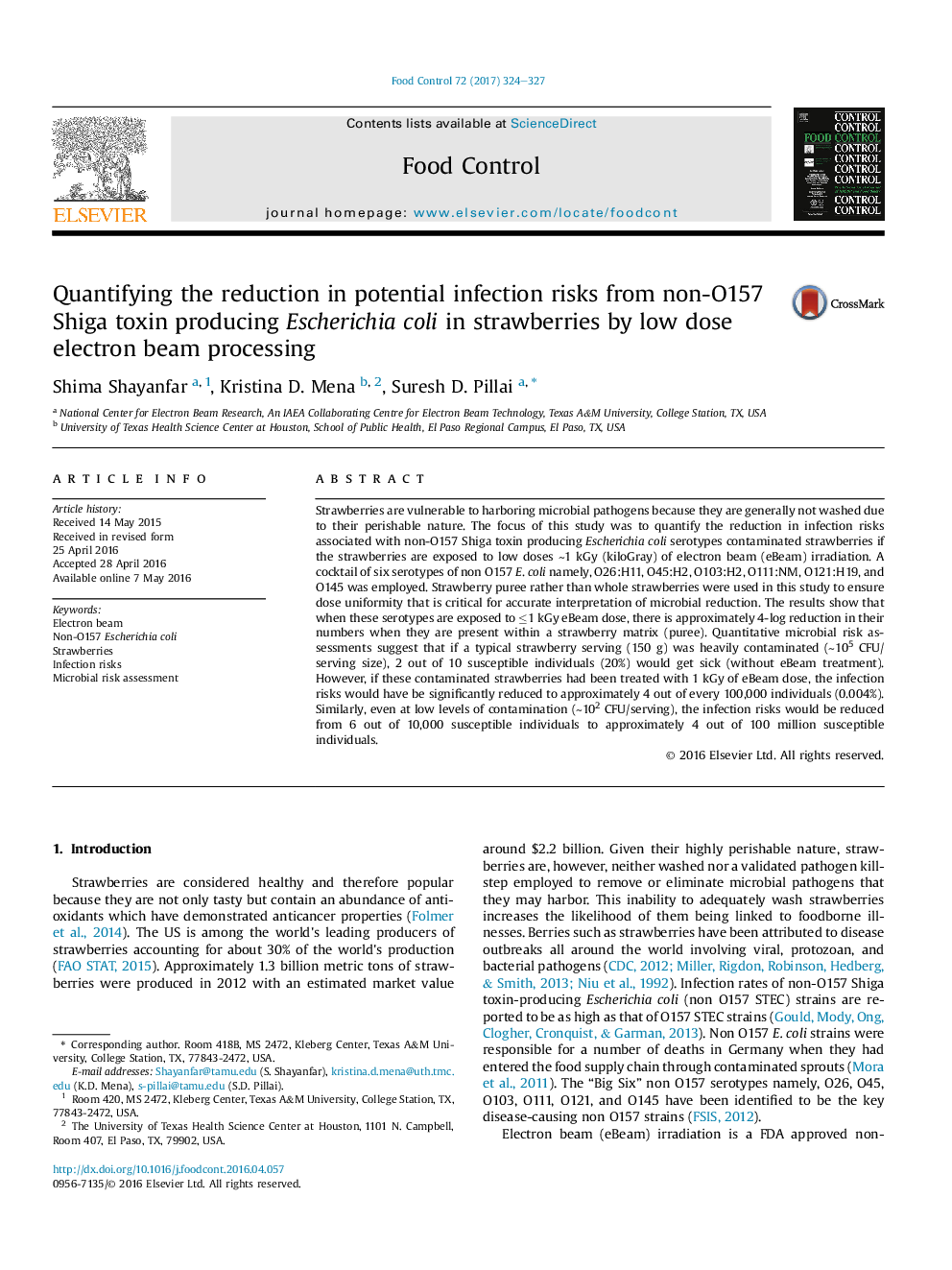| کد مقاله | کد نشریه | سال انتشار | مقاله انگلیسی | نسخه تمام متن |
|---|---|---|---|---|
| 5767373 | 1413194 | 2017 | 4 صفحه PDF | دانلود رایگان |

- Non-O157 Escherichia coli strains are sensitive to electron beam irradiation.
- 1Â kGy eBeam dose achieves 4-log reduction of non-O157 E. coli strain in strawberries.
- Infection risks is significantly reduced by using 1Â kGy eBeam dose on strawberries.
Strawberries are vulnerable to harboring microbial pathogens because they are generally not washed due to their perishable nature. The focus of this study was to quantify the reduction in infection risks associated with non-O157 Shiga toxin producing Escherichia coli serotypes contaminated strawberries if the strawberries are exposed to low doses â¼1 kGy (kiloGray) of electron beam (eBeam) irradiation. A cocktail of six serotypes of non O157 E. coli namely, O26:H11, O45:H2, O103:H2, O111:NM, O121:H19, and O145 was employed. Strawberry puree rather than whole strawberries were used in this study to ensure dose uniformity that is critical for accurate interpretation of microbial reduction. The results show that when these serotypes are exposed to â¤1 kGy eBeam dose, there is approximately 4-log reduction in their numbers when they are present within a strawberry matrix (puree). Quantitative microbial risk assessments suggest that if a typical strawberry serving (150 g) was heavily contaminated (â¼105 CFU/serving size), 2 out of 10 susceptible individuals (20%) would get sick (without eBeam treatment). However, if these contaminated strawberries had been treated with 1 kGy of eBeam dose, the infection risks would have be significantly reduced to approximately 4 out of every 100,000 individuals (0.004%). Similarly, even at low levels of contamination (â¼102 CFU/serving), the infection risks would be reduced from 6 out of 10,000 susceptible individuals to approximately 4 out of 100 million susceptible individuals.
Journal: Food Control - Volume 72, Part B, February 2017, Pages 324-327